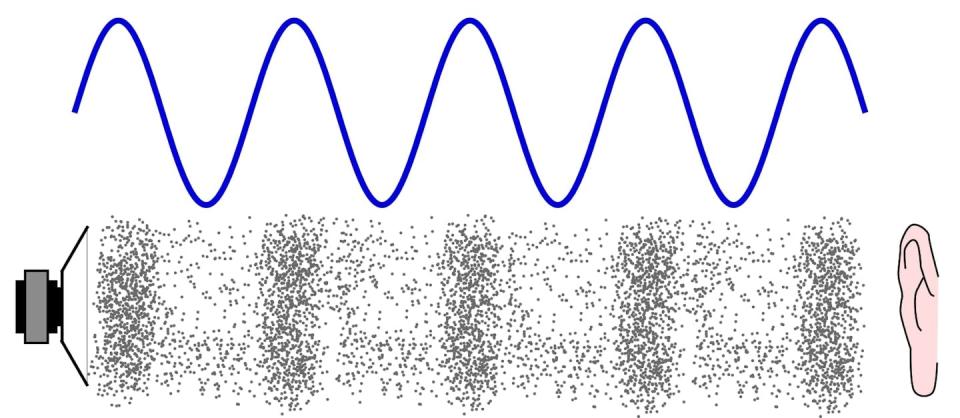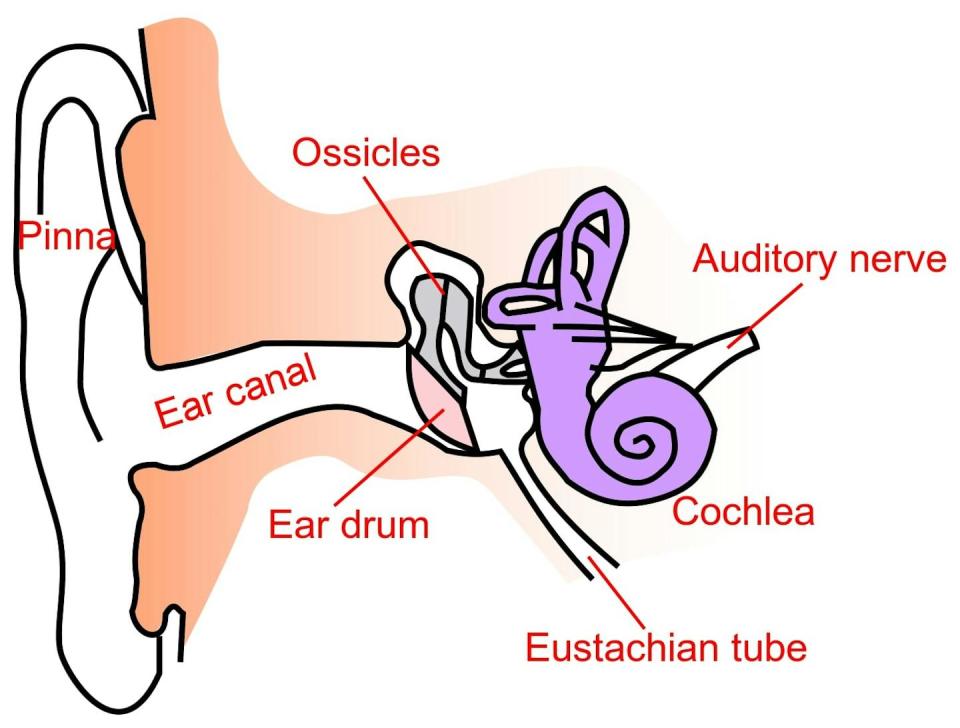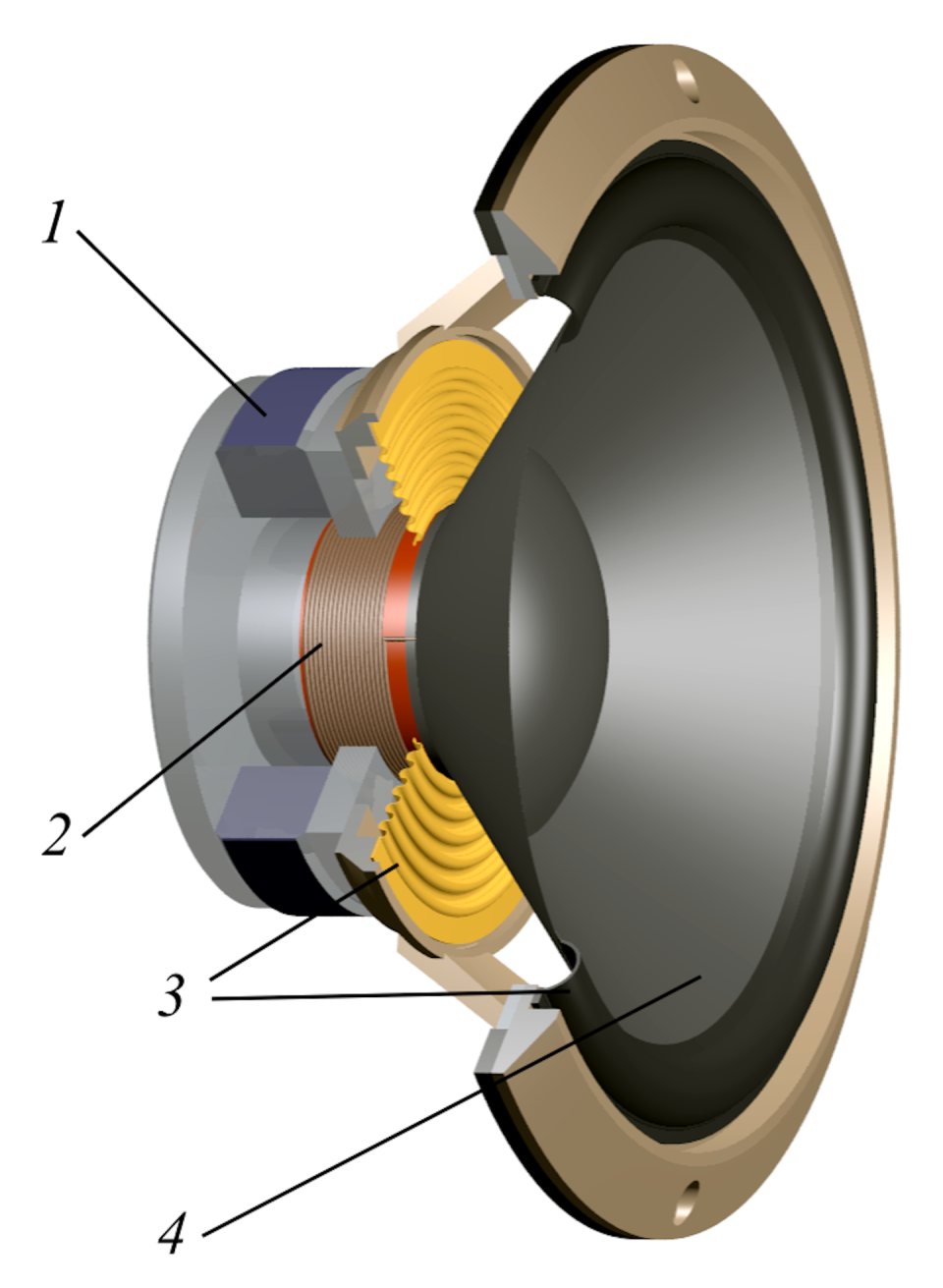Between music, podcasts, gaming and an unlimited supply of online content, most people spend hours a week wearing headphones. You may be thinking of a new pair for the holidays, but with so many options on the market, it can be difficult to know what to choose.
I am a professional musician and professor of music technology studying acoustics. My work explores the intersection between the scientific, artistic and human subjective aspects of sound. Choosing the right headphones is all about considering those three aspects, so what makes a really good pair?

What is sound really?
In physics, sound is made of air vibrations made up of a series of high and low pressure zones. These are sound wave cycles.
The number of cycles that occur per second determines the frequency, or pitch, of the sound. Higher frequencies mean higher pitches. Scientists describe frequencies in hertz, so a 500 Hz sound goes through a total of 500 cycles of low and high pressure per second.
The loudness, or amplitude, of a sound is determined by the maximum pressure of a wave. The higher the pressure, the louder the sound.
To create sound, headphones turn an electrical sound signal into these cycles of high and low pressure that our ears interpret as sound.


The human ear
Human ears are incredible sensors. The average person can hear a huge range of pitches and different loudness levels. So how does the ear work?
When sound enters your ear, your ear drum converts the air vibrations into mechanical vibrations of the tiny bones of the middle ears. These mechanical vibrations become fluid vibrations in your inner ear. Sensitive nerves then convert those vibrations into electrical signals that your brain interprets as sound.
Although humans can hear a range of pitches from about 20 Hz to 20,000 Hz, human hearing does not respond equally well to all frequencies.
For example, if a low-frequency hum and a high-pitched bird have the same loudness, you would find that the hum is quieter than the bird. In general, the human ear is more sensitive to mid frequencies than low or high pitches. Researchers think this may be due to evolutionary factors.
Most people don’t know that hearing sensitivity varies and, frankly, would never consider this phenomenon – it’s how people hear. But headphone engineers certainly need to consider the difference between human perception and pure physics.


How do headphones work?
Headphones are small speakers – both the larger types that sit over your ears as well as small headphones. Simply put, speakers do the opposite of your ear: They convert the electrical signals from your phone, record player or computer into vibrations in the air.
Most speakers are made of four components: a fixed magnet, a coil of wire that moves back and forth around that magnet, a diaphragm that pushes air and a suspension that holds the diaphragm.
Electromagnetism states that when a wire is wrapped around a magnet and the current inside the wire changes, the magnetic field around the wire changes proportionally. When an electrical signal hits a song or podcast through the wires in a set of headphones, it changes the current and moves the magnet. The magnet then moves the diaphragm in and out – kind of like a plunger – pushing and compressing air, creating pulses of high pressure and low pressure. This is the music you hear.
Ideally, a speaker would perfectly convert the input electrical signals into an audio representation. However, the physical world has limitations. Things like the size and material of the magnet and diaphragm prevent a speaker from perfectly matching its output to its input. This creates distortion and some frequencies are louder or softer than the original.
While no headphone can recreate the signal perfectly, there are an infinite number of ways to distort that signal. The reason two equally expensive headphones can sound or feel different is because they distort things in different ways. When engineers build new headphones, they must consider not only how human hearing distorts sound, but also the physical limitations of any speaker.


Listener’s choice
If all the complications of headphones and speakers aren’t enough, listeners themselves play a huge role in deciding what constitutes a “good” pair of headphones. Factors such as age, experience, culture and music genre preference influence the type of frequency distortion a person prefers. Headphones and anything else are a matter of personal taste.
For example, some people prefer bass-heavy headphones for hip-hop music, while classical music listeners may want less frequency distortion. But music or recreational listening isn’t the only thing to consider. Headphones for the hearing impaired may emphasize frequencies from about 1,000 Hz to 5,000 Hz, as this helps to speak more intelligibly.
You could certainly play a hip-hop song through headphones designed for the hearing impaired, but most people would agree that the results aren’t very visible. Making sure the headphones you choose match how you will use them goes a long way to determining what will be good.
Ultimately, the science of headphone design, the artistry of content creators and human experience all intersect to create the perception of “good” headphones. Despite all these moving parts, there’s one foolproof way to tell when headphones are good: pick a good song and put on a pair! Because when all the characteristics align, a good pair of headphones can allow you to be transformed by sound.
This article is republished from The Conversation, a non-profit, independent news organization that brings you reliable facts and analysis to help you make sense of our complex world. It was written by: Timothy Hsu, IUPUI
Read more:
Timothy Hsu is a member of the Acoustical Society of America and an executive board member for the Indiana Section of the Audio Engineering Society.